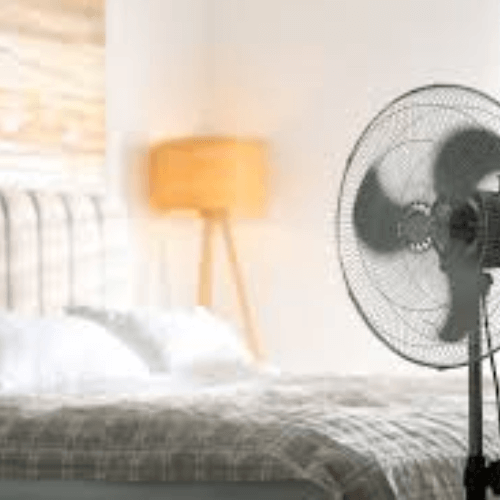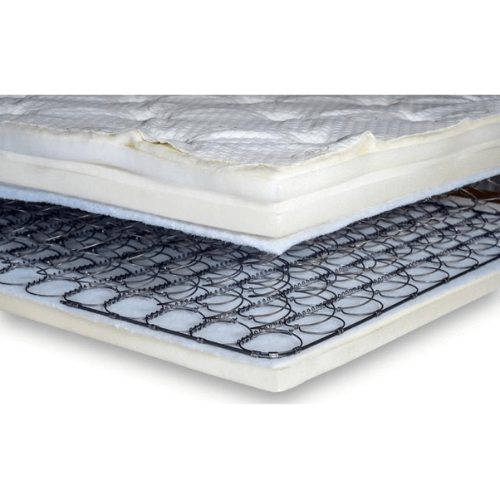Are you feeling like you’re sleeping on fire? Does your mattress feel hotter than the Sahara desert? If so, then a memory foam mattress might be the culprit.
Memory foam mattresses can often become too hot becuase the material can trap heat, creating an uncomfortable sleeping environment. It’s important to understand how they function and how you can reduce their temperature.
By taking these steps, you may find that you can still make use of this great mattress material without sacrificing comfort or sleep quality.
Is Memory Foam Hot?

One thing’s for sure: if you’re sleeping on a memory foam mattress, you’re likely to feel some warmth. It’s like putting a blanket over an oven – the heat builds up quickly!
That said, there are plenty of people who don’t mind or even prefer this sensation. Ultimately, it boils down to personal preference.
Still, there are some underlying causes that can make memory foam mattresses hotter than usual.
From manufacturing to design, these common factors can explain why your mattress may be overheating – but it ultimately does come back to personal preference.
Manufacturers tend to include gel memory foam and pocket springs to increase airflow and to mitigate any heat issues.
Causes Of Memory Foam Overheating

It’s like a hot summer day – the sun is blazing and your fans are running at full steam. You can feel yourself sweating just by standing still in your room.
That’s how some people feel when they sleep on memory foam mattresses – they just can’t seem to stay cool, no matter what they do.
So why is this happening?
There are several factors that can cause memory foam to overheat.
First of all, the material itself traps heat and doesn’t allow it to escape, which makes it difficult for air to circulate around the mattress.
Additionally, if the mattress is not adequately ventilated or if it’s placed in a room with an ambient temperature that’s too high, then this can also contribute to increased heat retention.
Finally, body heat from sleeping on the mattress also plays an important role in raising the mattress temperature.
All these factors combine to create a situation where sleeping on a memory foam mattress can be uncomfortable and even unbearable during warm nights.
Fortunately, there are solutions that can help reduce heat build-up and make your bed more comfortable again.
Tips To Prevent Heat Retention
Heat retention is a common issue for memory foam mattresses. This can make them too hot to sleep on.
So, what can you do? Here are some tips to prevent heat retention.
First off, buy a mattress with temperature regulating materials like graphite or copper-infused foam.
These materials will help draw heat away from your body while you sleep.
You should also look for breathable covers that allow air to flow through the mattress, keeping it cool and comfortable.
Finally, if possible, use a mattress pad or topper designed specifically for cooling purposes.
It’ll keep the surface of your mattress cooler and provide an extra layer between you and the foam material.
This can be especially helpful during warmer months.
Investing in these products can ensure a comfortable night’s sleep no matter how hot it gets outside.
Pros And Cons Of Memory Foam Mattresses
Memory foam mattresses have both pros and cons. They provide great support, pressure relief, and comfort.
But they also hold heat more than other types of mattresses.
Memory foam is usually made with petroleum-based materials, which makes it more susceptible to temperature changes than other mattress types.
It’s denser than regular foam mattress and doesn’t release air as well, trapping more body heat inside the mattress.
Memory foam mattresses tend to be more expensive than other types because of their special construction.
On top of that, some people find them too firm or too soft for their needs. So while they offer a lot of benefits, they may not be suitable for everyone.
A few alternatives to memory foam mattresses are innerspring mattresses, latex mattresses, adjustable beds, and hybrid mattresses.
Alternatives To Memory Foam Mattresses

Practical possibilities abound when considering alternatives to memory foam mattresses.
People pondering potential solutions for a too-hot mattress need not despair – practical and pleasing solutions present themselves.
Primarily, purchasers should ponder their possibilities before picking the perfect pad.
Firstly, those seeking a sound sleep should seriously consider swapping a foam mattress for a spring-based one.
Spring mattresses offer greater ventilation than foam, meaning they are usually cooler.
Furthermore, they can be quite affordable compared to memory foam counterparts, providing people with an economical alternative.
Secondly, shoppers might also assess other materials such as latex or wool-filled mattresses.
These materials are naturally breathable and tend to be cooler than foam while still providing ample support.
Additionally, they are usually eco-friendly which can be appealing to environmentally conscious customers.
It is important to note that prices may vary greatly depending on the type of material chosen so it’s recommended buyers do their research before committing to any purchase.
With these alternatives in mind, customers will have more options when it comes to finding comfortable and cool sleep solutions that suit their needs and budget perfectly.
Cooling Technology For Memory Foam Mattresses
Have you ever wondered how to keep cool while sleeping on a memory foam mattress?
Memory foam mattresses are known for their comfort and support, but they can also trap heat.
Fortunately, there are cooling technologies available specifically designed to work with memory foam mattresses.
Cooling technologies vary in effectiveness, so it’s important to consider several factors when shopping for a mattress cooler.
Gel-infused memory foam is one of the most popular cooling technologies.
It works by drawing heat away from the body, providing a more comfortable sleep experience.
Another option is copper-infused memory foam which carries the same benefits as gel-infused memory foam, plus antimicrobial properties that help reduce odors and bacteria buildup.
Finally, there are air-cooling systems that work by circulating air around the mattress core to reduce heat buildup.
These systems can be powered manually or electronically, allowing users to adjust temperature levels as needed.
All these cooling technologies offer benefits and drawbacks; understanding them is key to finding the best option for your individual needs.
Conclusion
Memory foam mattresses can be a great investment for those looking for a comfortable night’s sleep. But for some people, the mattress may be too hot.
Fortunately, there are cooling technologies available to address this issue.
Side sleepers tend to benefit more from memory foam mattresses than back sleepers due to the contouring support they provide.
In terms of materials, natural or synthetic options both have their advantages.
Overall, memory foam mattresses are an excellent choice for many people- 80% of customers report increased satisfaction with their new mattress within 3 months of purchase.
This statistic shows just how beneficial investing in a good mattress can be!
I’m confident that with the right research and knowledge, you’ll find the perfect memory foam mattress to match your needs and budget.





